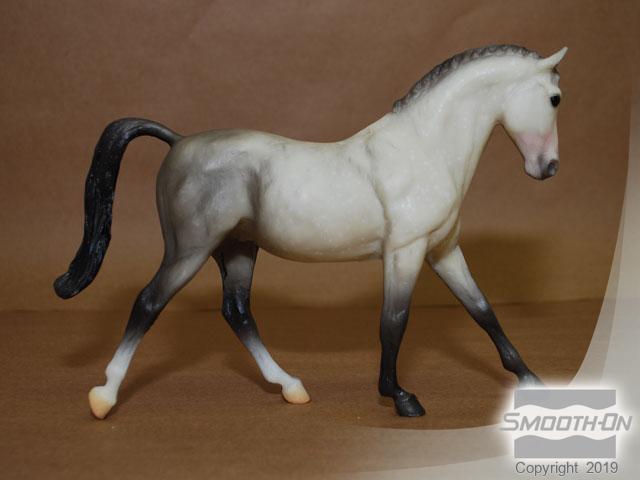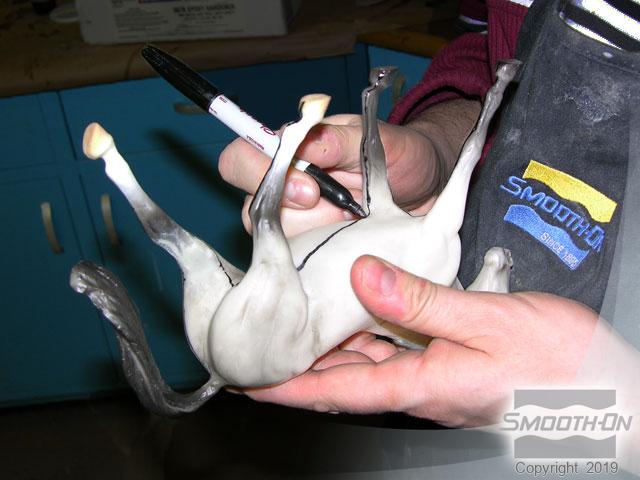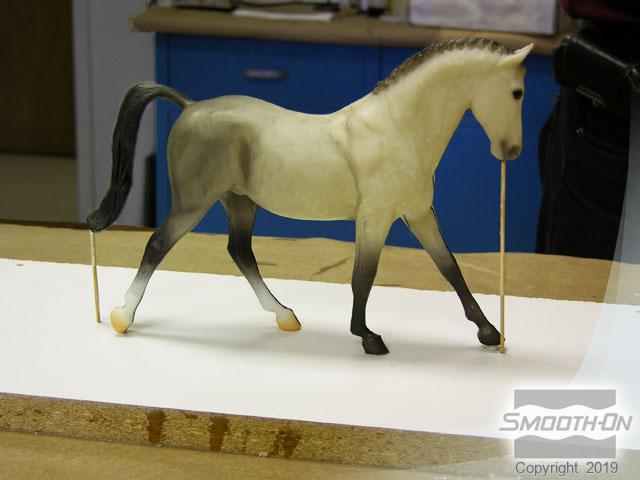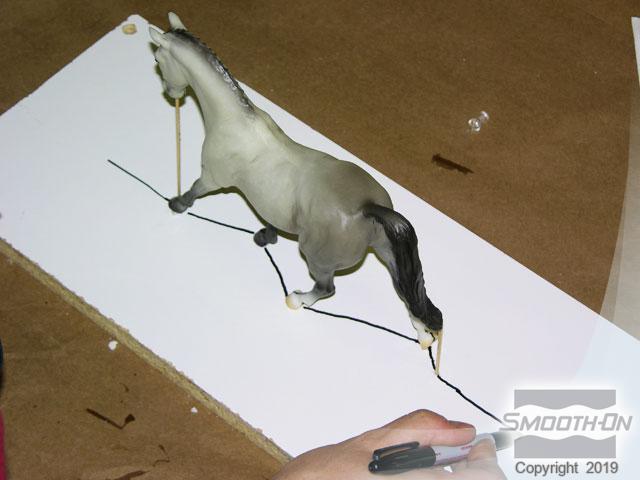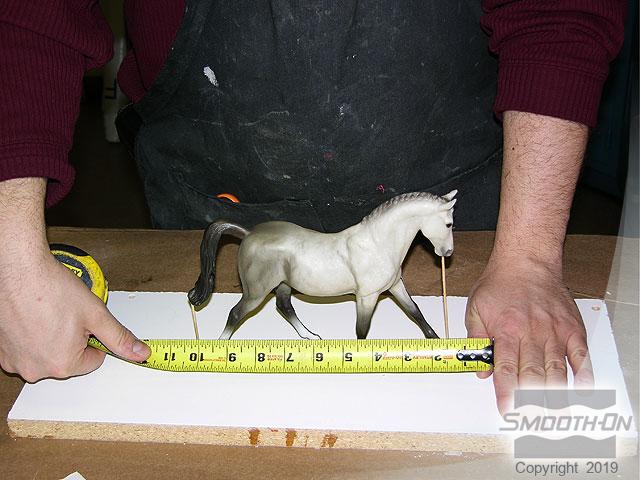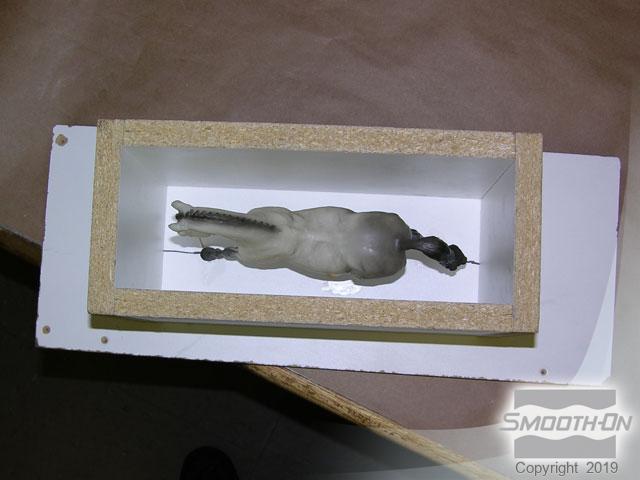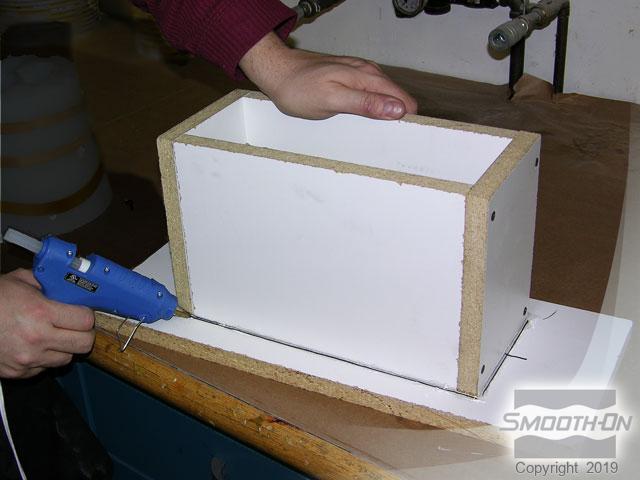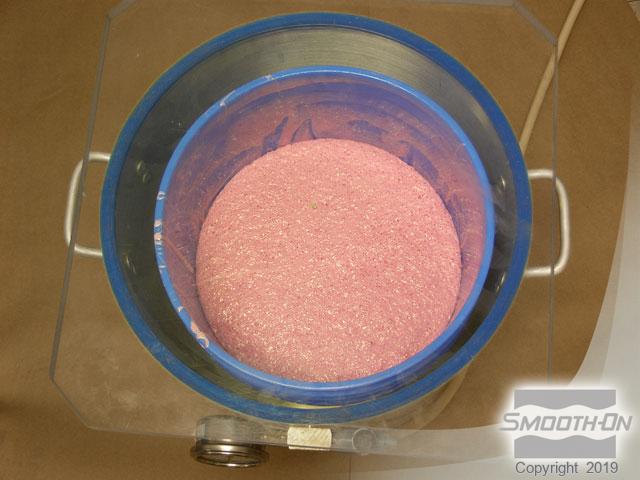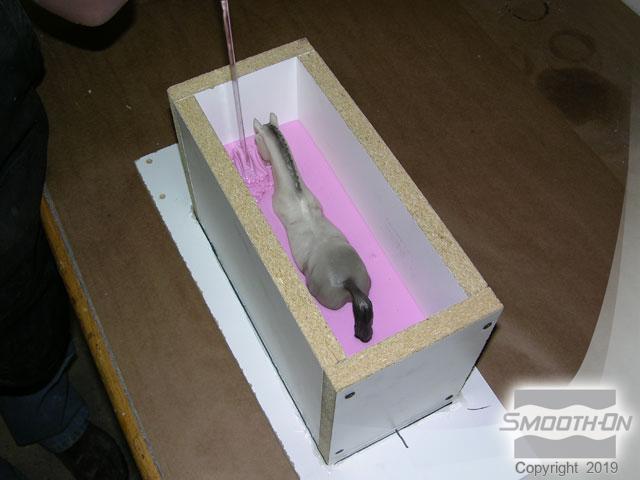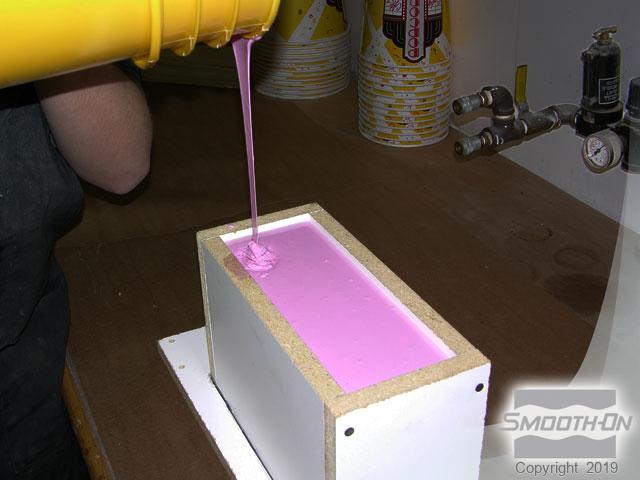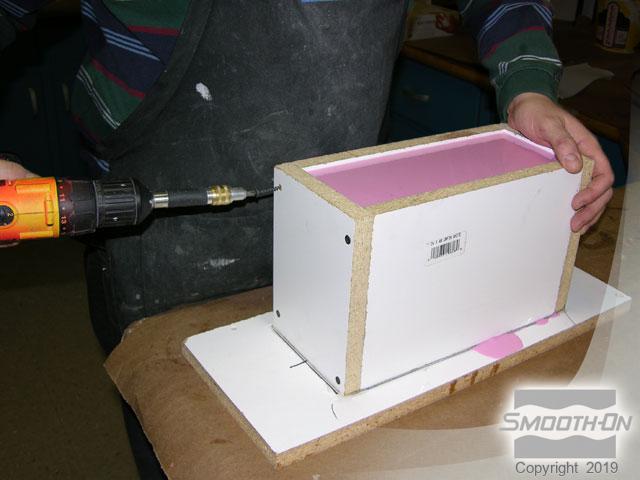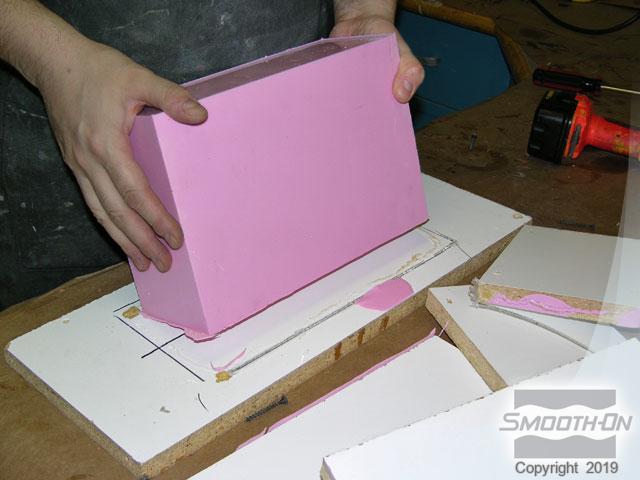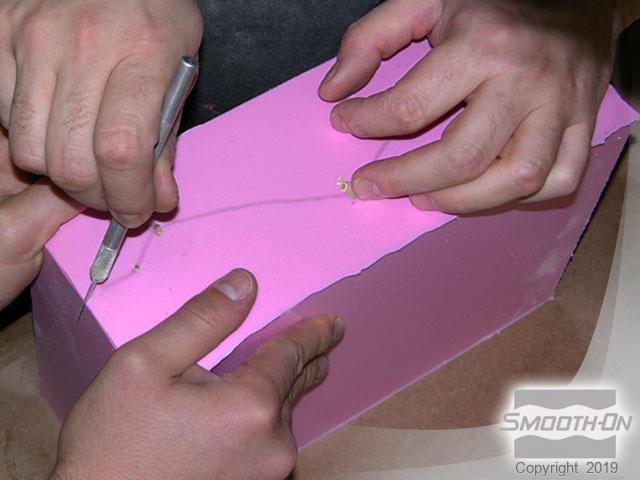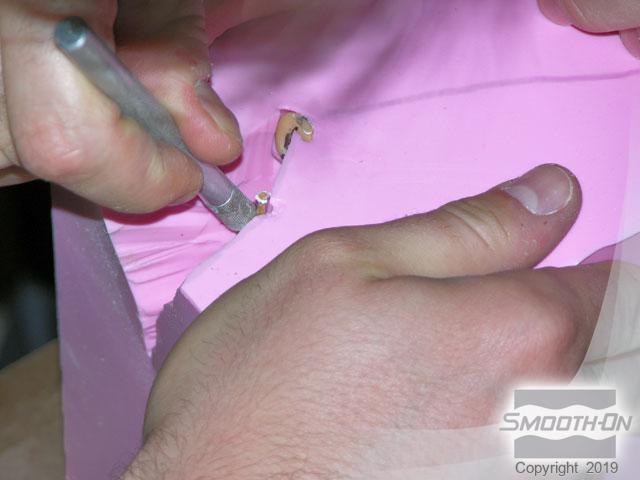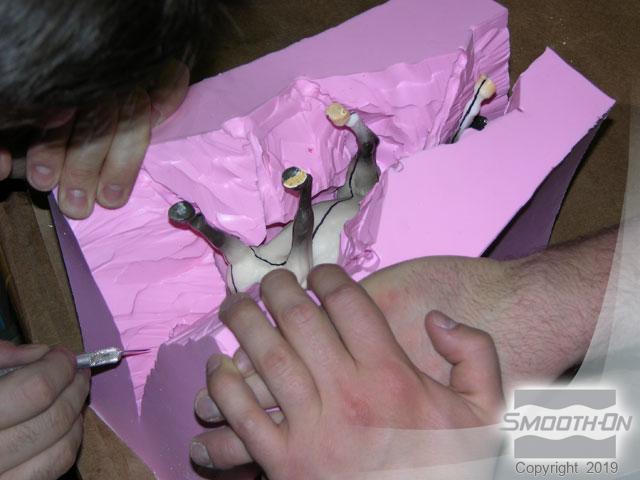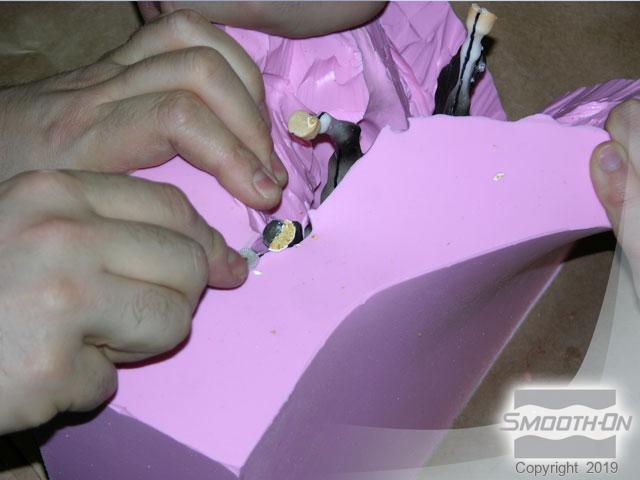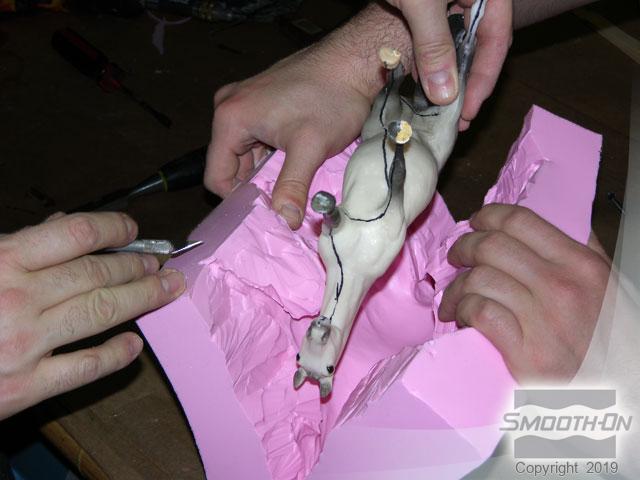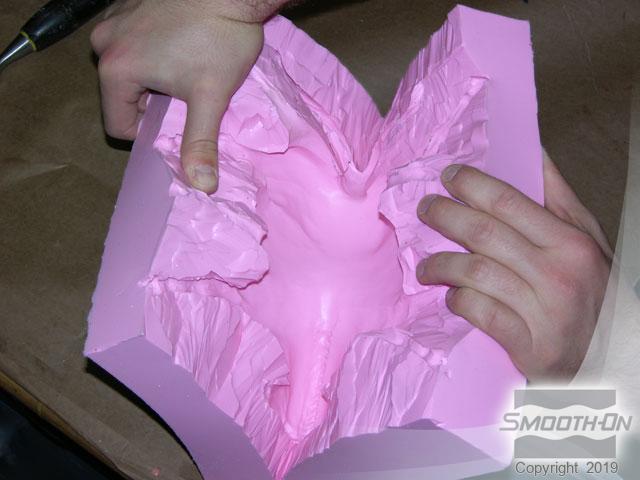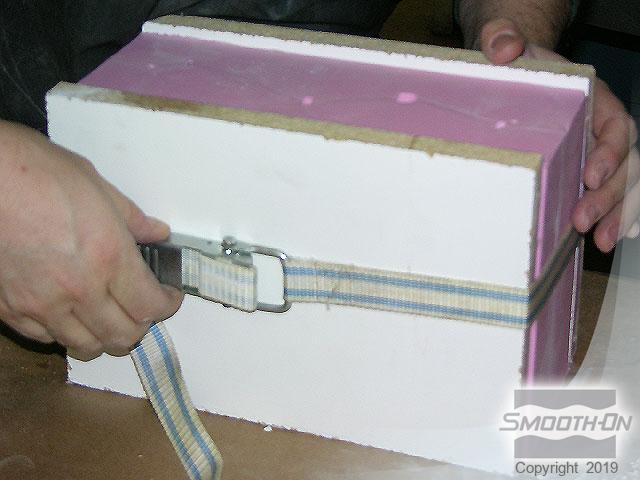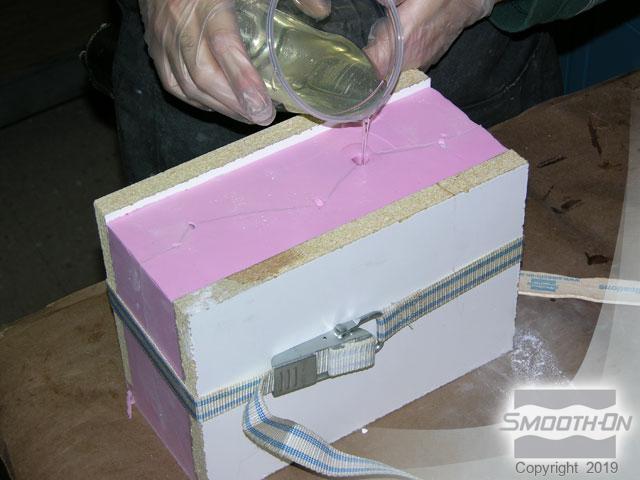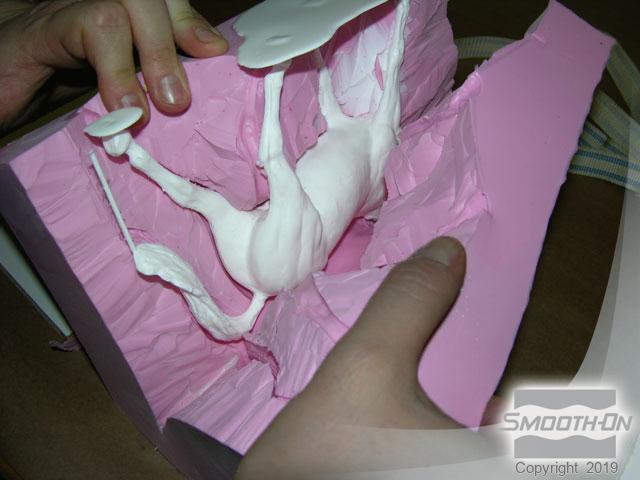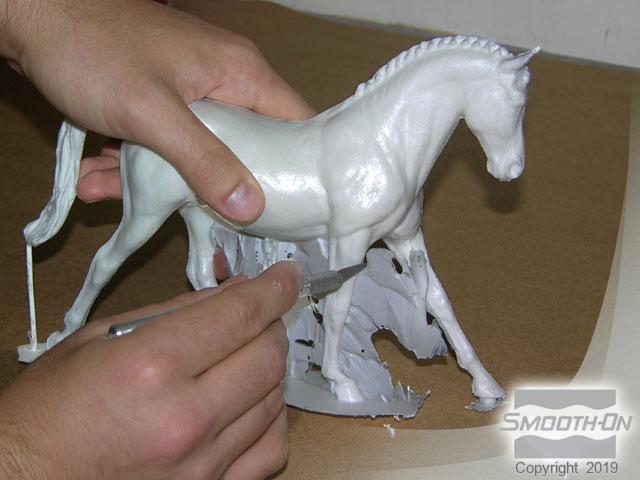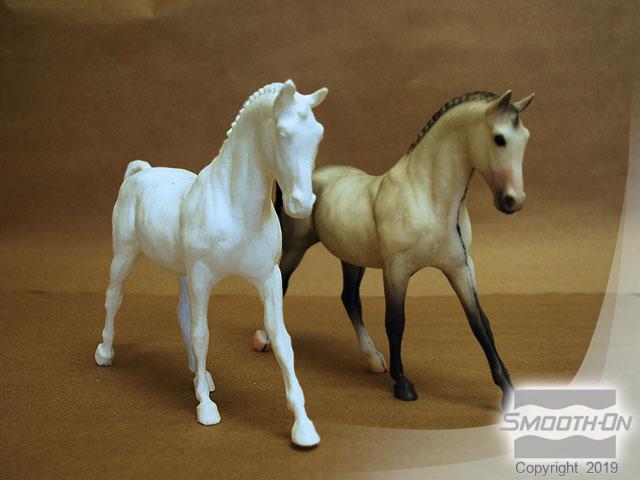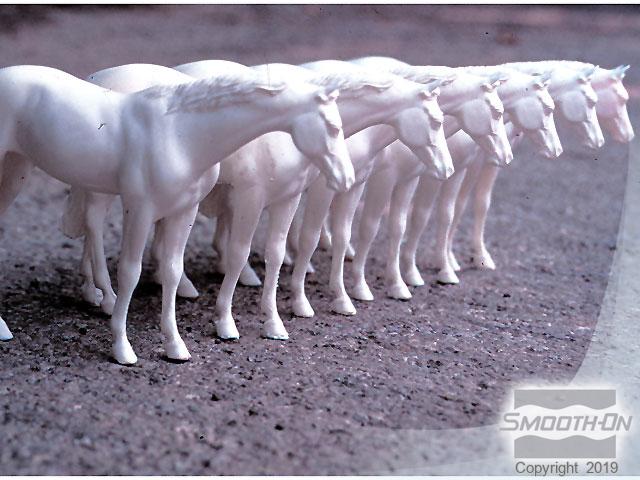How To Make a Block Mold of a Four Legged Animal
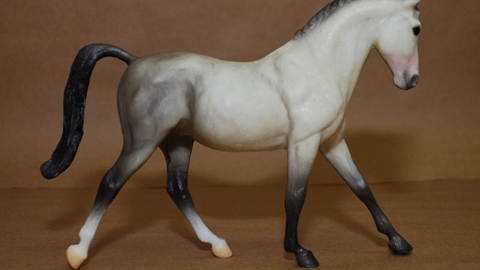
Overview
One of the more common mold making application questions that we receive is how to mold and cast a four legged animal, such as a horse with different leg positions and flowing tail. The key to being successful and subsequently getting a perfect reproduction is to know where to properly place air vents and also where to make your extraction cut line.
Mold Max® 30 is the mold rubber featured for this demonstration. The mold will be a one piece cut block mold with air vents placed at strategic points to minimize air entrapment during casting. Smooth-Cast® 300 casting resin is then used to make an exact duplicate of the original model.
Materials Used in this Tutorial
- Hot Melt Glue Gun
- Black Marker
- Measuring Tape
- Melamine Board
- Vacuum Chamber
- Mold Max 30
- Knife
- Smooth-Cast 300
- Mold Straps
- Mixing Sticks
- Mixing Containers
Step 1: Preparing Model
The original model is moderately complex with fine detail in the mane and facial features. In examining this model for potential problems we observed that the posed legs are not uniform; each contacted the base board at a different angle. Once the model is completely encapsulated in rubber you will need to know where to make the extraction cut. Two reference lines will be drawn. The first reference line is drawn with a marker along the underside of the horse from the mouth to the tip of tail.
Use hot melt glue to stabilize and secure the model to a base board. To prevent air entrapment during casting, create air vents at strategic points on the model. In this case, wooden dowels are glued in place at the tip of the tail and mouth. The second reference line is drawn onto the base board mirroring the guide lines that were first drawn on the model. The line is extended a minimum of 2 inches past the horse in both directions. This line will transfer onto the surface of the mold rubber.
Measurements are taken and a mold box is built using 3/4 inch/1.9 cm melamine board available at most Home Supply Centers. The interior dimensions of the box should be at least 10 inches/25.4 cm long, by 4 inches/10.16 cm wide, by 7 1/2 inches/19.05 cm tall. The mold box has a minimum of 1/2 inch/1.27 cm clearance on all sides including the highest point of the model (the ears). The box is secured to the base board with Hot Melt Glue. This will also ensure that the mold rubber will not escape at the interface.
Step 2: Pouring Mold Max 30
Mix Mold Max® 30 silicone rubber, then vacuum in a vacuum chamber to remove air bubbles. Pour the material slowly into the lowest point of the mold box and allow it to seek its own level up and over the model. Once the mold box is completely filled with Mold Max® 30 silicone rubber, allow the material to cure a minimum of 16 hours before removing the sides of the mold box.
Step 3: Demolding
Carefully separate the base board from the mold. Gently release the points where the model and wooden dowels are attached to the board.
EXTRACTING THE MODEL: The reference line drawn on the base board has transfered to the mold rubber and is visible on the surface of the mold. A pair of helping hands is recommended during this process to hold the mold walls apart while cutting. Carefully cut the mold with a series of small slices using the reference line as a guide. Work your way through the Mold Max® 30 using the lines on the surface of the mold and model as guides. Continue to make small careful cuts following the lines until the horse can be comfortably extracted from the mold.
NOTE: Do not over cut the rubber mold as this will cause problems with alignment. Remove the original model from the Mold Max® 30 mold.
Step 4: Creating and Finsihing Casting
The Mold Max® 30 silicone mold rubber reflects perfect detail captured from the original model. Use Two Mold Box boards from the long axis to support the rubber mold for casting. To secure the mold structure during casting, use a mold strap as well. Mix Smooth-Cast® 300 casting resin and slowly pour it into the mold. Allow the Smooth-Cast® 300 to cure for a minimum of 30 minutes before demolding. Due to the thin leg sections on this model, the resin is allowed to cure for longer than indicated on the Technical Bulletin.
Trim away the flashing with an X-Acto knife. The Smooth-Cast® 300 casting resin perfectly reproduces every detail of the original model and is ready for post finishing. Casting companies around the world know Mold Max® 30 silicone rubber as a production grade silicone capable of generating many castings.
